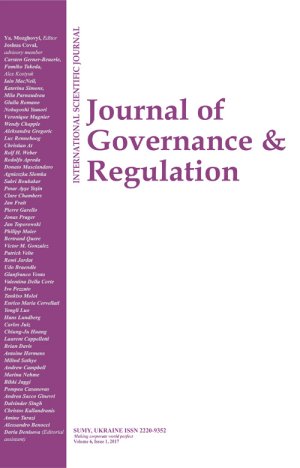
Analysis of the budget formulation process through the multiple streams approach
Download This ArticleDevrizon , Wahyudi Kumorotomo, Agus Heruanto Hadna

This work is licensed under a Creative Commons Attribution 4.0 International License.
Abstract
This study aims to explain the causes of congestion and the network of budget policy actors (Harden & Kirkland, 2021; Kirkland & Phillips, 2018) in Riau Province in 2014 and 2016 using the multiple streams approach from Kingdon (1984). This article illustrates the results of a qualitative descriptive analysis review by analyzing primary and secondary data from the results of documentation and interviews with informants who are directly involved in the budget preparation process in Riau Province, which includes explanations regarding the factors that cause gridlock in budgetary policies and the network of actors that influence the budget policy process. The results of this study indicate that various factors causing budgetary policy gridlock in Riau Province can be seen from three multiple streams approach, namely problem stream, policy stream and politic stream, which still have dynamics in the process. Then, the network of actors who can influence the budget policy process in Riau Province can be seen from the existence of a policy gridlock in the process of preparing the budget in Riau Province which occurs due to cross-policy interests, each of which seeks to accommodate the interests of two government actors, namely the governor (executive) and the council local people’s representatives (legislature). Each actor has a role and a way to propose and combine their interests. However, even though the actor’s preference can be accommodated in budget policy, in essence, this does not represent as a whole that the budget policy implementation process in Riau Province has been carried out optimally. Our findings provide benefits for each stakeholder in improving the budget policy formulation process through the multiple-stream method. This study encourages the growing awareness of stakeholders that budgeting policies require systematic improvement in implementation aspects in an area.
Keywords: Budget Formulation, Budget Policy, Multiple Stream
Authors’ individual contribution: Conceptualization — D., W.K., and A.H.H.; Methodology — D.; Software — D.; Validation — D., W.K., and A.H.H.; Formal Analysis — D. W.K., and A.H.H.; Writing — Original Draft — D.; Writing — Review & Editing — D.; Visualization — D.; Supervision — W.K. and A.H.H.; Project Administration — D.
Declaration of conflicting interests: The Authors declare that there is no conflict of interest.
JEL Classification: H1, H7, O2, R5
Received: 17.02.2023
Accepted: 22.02.2024
Published online: 27.02.2024
How to cite this paper: Devrizon, Kumorotomo, W., & Hadna, A. H. (2024). Analysis of the budget formulation process through the multiple streams approach [Special issue]. Journal of Governance & Regulation, 13(1), 299–309. https://doi.org/10.22495/jgrv13i1siart4



















